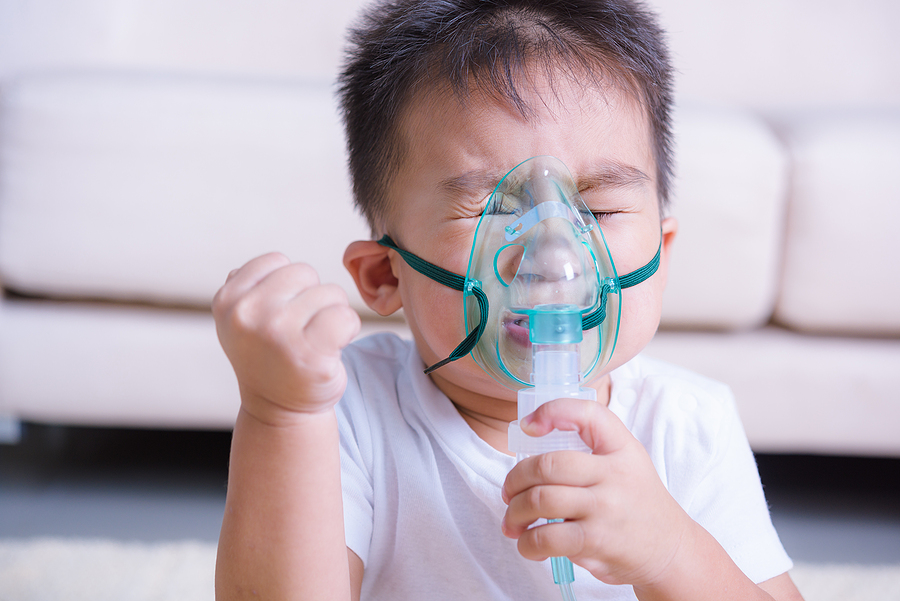
A nagging tickle in your throat has you coughing nonstop for hours and keeps you up all night. No matter how much you cough, you can’t seem to clear your throat. You’ve coughed so much your throat stings. Coughs may … Continue reading
READ MORE
Watching your child struggling to get a deep breath is one of the more alarming events you’ll experience as a parent. At Premium Allergy & Respiratory Center, we strive to help children breathe easy and avoid the impact allergic asthma has on their life.
Asthma is a chronic health condition where the airways narrow and make it difficult to breathe. Often, asthma develops when respiratory allergies go untreated and worsen. That’s why early respiratory allergy testing is crucial.
What people don’t often realize is that a body’s allergic response may worsen over time. What starts as a skin rash (eczema) progresses to itchy eyes, a runny nose, and a cough. Ignored, it might make what’s called an “allergic march” and steamroll into respiratory allergies that trigger asthma attacks.
Asthma is a chronic inflammatory disease that affects the airways. After an exposure to an allergen, the immune system sees that allergen as an invader. This triggers an inflammatory response, or attack if you will, that increases mucus flow and gets the eyes watering to do whatever it takes the flush that supposed invader from the body.
Over time, those changes impact the airways, leading to chest tightness, coughing, shortness of breath, and wheezing, all key indicators of asthma. Some of the most common allergens that can end up causing allergic asthma are:
Taking your child for early respiratory allergy testing results in several benefits, including:
When you know what allergens bother your child, it’s easier to create a plan of action. Instead of having to play the guessing game of “it might be the pine trees outside or the dog we just got.” Before you give up a family pet, you have the proof needed to make wise decisions.
Avoidance is one way to decrease the body’s inflammatory response that causes the symptoms of an allergy. Instead of risking allergic reactions that could develop into asthma over time, your child learns to avoid the allergens.
If dust mites are a problem, more frequent sanitization of sheets, pillows, and comforters may help. Removing carpeting and curtains is also helpful. Leather furniture won’t collect dust mites as much as fabric.
Once you know what allergens impact your child’s respiratory health, you can work together on allergen avoidance. That’s not the only path forward. An allergist works with your child to find targeted treatments that work effectively.
Immunotherapy like sublingual tabs or allergy shots may help. An allergist helps determine if immunotherapy is safe for your child. A general guideline is that the child is at least five years old, but it’s important to work with a doctor to ensure the right treatment option is followed.
There’s little that’s as defeating as having your parents tell you no. No, you cannot go outside and play with other children because the pine pollen counts are too high. No, you can’t go meet your friend’s new kitten. You can’t go on that field trip because you’ll encounter too many allergens.
Instead of limiting the experiences your child has in childhood, you’ll have allergens pinpointed and a treatment plan in place that allows your kid to be a kid. An active, happy child is the best reason to schedule allergy testing.
When inflammation isn’t reduced, it can start to change the structure of the airways, a process known as allergen-induced airway remodeling. Airway walls thicken as mucus production increases. Proteins like collagen build up and make the airways stiffen. Once they’re too stiff, spasms that trigger an asthma attack are more likely.
Allergy testing is often done using one of four methods. Your allergist determines the best test for the type of allergies your child is suspected of having and the child’s age.
Allergy test results add clarity to what’s going on with your child, but it isn’t all that’s done. Your child’s allergist must also look at a complete medical history and the symptoms experienced over time. Have details on when symptoms appear, how long they last, and what happens during these allergies or respiratory ailments.
Should you have your child tested? When? Allergy testing is recommended for the following groups.
For children who fall into one of those categories, testing is best done once the child can comprehend what’s going on and follow simple directions, usually by the age of three. The earlier you can get the testing done, the better the chances of changing the direction allergies are heading. With an early diagnosis, it’s possible to keep allergies from progressing into allergic asthma.
Childhood asthma is stressful and impacts a child’s daily life. That’s why it’s so important to undergo allergy testing and take proactive steps to stop an allergy’s progression to asthma.
Our doctor specializes in helping children improve how their immune system tolerates allergens in order to improve their daily life. Schedule an appointment at Premium Allergy & Respiratory Center to start the path to helping your child stay healthy.